+81-3-5990-5540
Message usAn overview of Japanese Cities
Each area of Japan has unique features that contribute to an overall different experience as you live, study, and work there. The descriptions below are created to give you an idea of the kind of lifestyle and experiences you will find in each place. This article covers the main cities of interest to International people in Japan, where there are schools, employment opportunities and an established international community in which you can feel supported and engaged.
TOKYO: The bustling capital
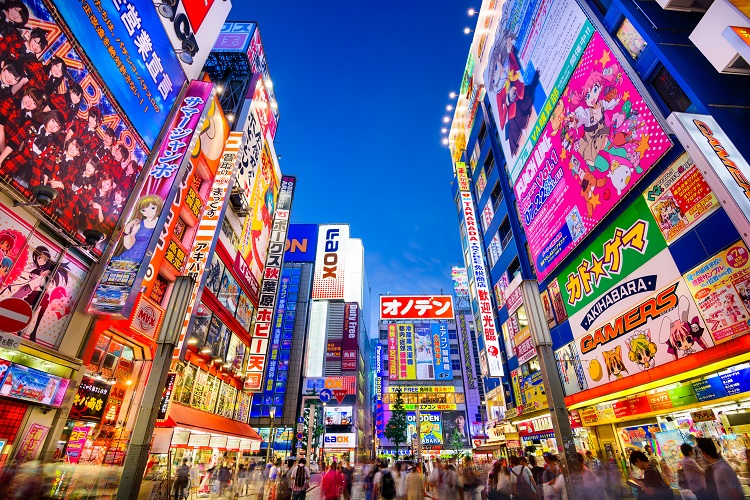
Tokyo is the not only the largest city in Japan, but has the largest population of any metropolis in the world and is the capital of Japan. Although considered from a world perspective as a city, or even a megacity, Tokyo is one of 47 prefectures in Japan and within it contains 23 city wards. It is said that this sleepless city would be even larger if not for its official, political boundaries, as the city seems to continue beyond despite them, a testament to its scale. In fact, unlike most cities in the world, it is virtually impossible, and will cause confusion if you try, to refer to a “downtown” of Tokyo. As quoted from Samuel Johnson “Sir, when a man is tired of London, he is tired of life; for there is in London all that life can afford”, (The Life of Samuel Johnson LL.D. Vol 3). To this, many might say the same about Tokyo, for not only can nearly everything be found in its vastness, but it is also home to Japan’s largest international community. Indeed, Tokyo has virtually everything for everyone, including local and world-class cafes, restaurants and bars; a vibrant art scene of music festivals, exhibitions, and live houses; places of learning such as museums, galleries, expos and fairs; and places of serenity with parks, gardens, temples and shrines; and as the hub, is accessible to many beautiful & popular areas that can be reached in a few hours or less. Such trips out of Tokyo can take you to famous hot spring areas, lakes & mountains, temples nestled in a hilly forest landscape, and historic villages that retain their charm of previous times such as that of the Tokugawa and Meiji Eras. Tokyo is a place of constant discovery. It is where even the Japanese can capture a sense of what the future might entail. It’s strength, however, is also its downfall, as it leaves some people to feel tired after a while from the stress of getting around in the sleepless sea of people and of living among such high energy all of the time. Still, many people can find their solace in the pockets of quiet in the city of cities, or have a relentless appetite for Tokyo’s endless stream of activity and surprise.
OSAKA: The Heart of Kansai
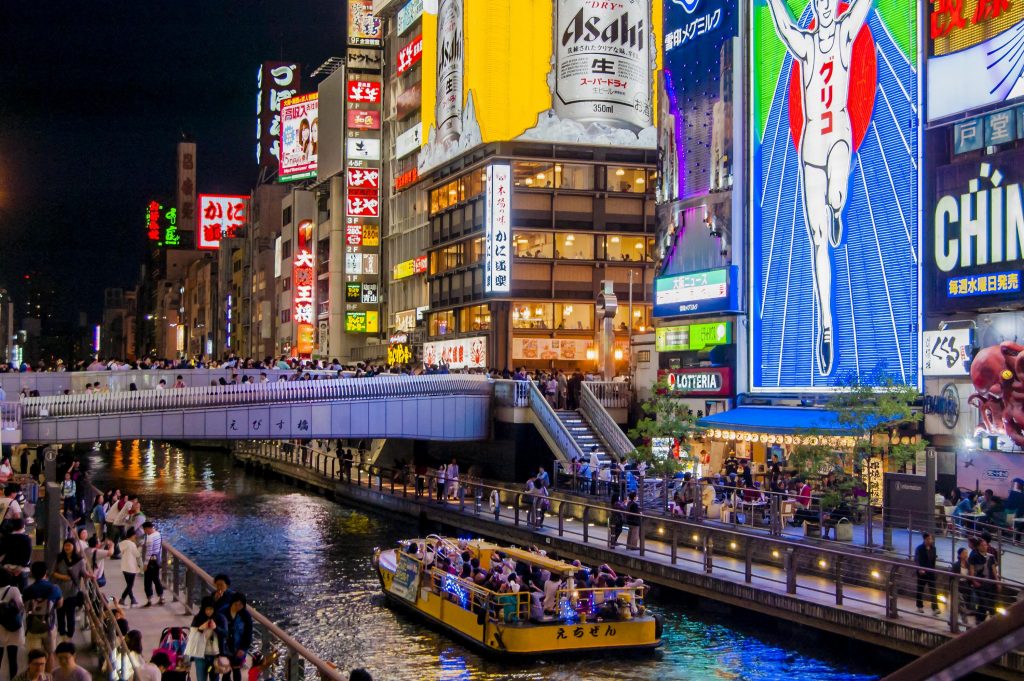
Osaka is Japan’s second largest metropolitan area and is the largest city in the Kansai region, with a highly dense population that drives the economy of the region as it has for centuries. It is a historically and culturally important site proximate to the old capital, Kyoto. In the Heian period, merchants, traders and important authoritative figures would come and go to the old capital passing through Osaka, keeping the border officers busy. Merchandise and local businesses flourished in the Edo period, and Osaka was nicknamed “The kitchen of the State (天下の台所)”. We can still observe the liveliness of the city today, and Osaka is still renowned for its food, of which the most famous include okonomiyaki, takoyaki, and kushi-katsu, to name a few. The local people of Osaka are generally regarded as friendly, lighthearted, and jocular, with a style of joking that is said to be notably different than the sense of humour in Tokyo. Similar to Tokyo, however, Osaka is also a city that never seems to sleep, and has many exciting features, including an energetic nightlife, local restaurants and izakaya serving up delicious food much loved by its locals, popular shopping districts, museums, parks, famous temples & shrines, an aquarium, and Universal Studios Japan. It is also worth mentioning the location of Osaka, which is in the centre of the Kansai Region, officially called the Kinki Region or Kinki Chihou (近畿地方), between the cities of Kyoto, Kobe and Nara, which in addition to Osaka are the region’s most popular and notable areas. As such, living in Osaka provides easy access to these areas: 30 minutes to famous former capital of Kyoto, 20 minutes to populous city of Kobe and 30 minutes to Japan’s first capital city and underrated nugget of history, Nara. The Kansai area, especially Osaka, is typically contrasted to Kanto in terms of the character of people, food, local dialect, and local manners such as which side to queue when you go on the escalator, which is on the right, unlike the usual left everywhere else. If you are unsure of which city to stay in, try comparing the atmosphere of Tokyo and Osaka — this might give you a better idea of your priorities. Feel free to contact us for more advice!
KYOTO: The famous historic capital of Japan and hub of traditional culture.
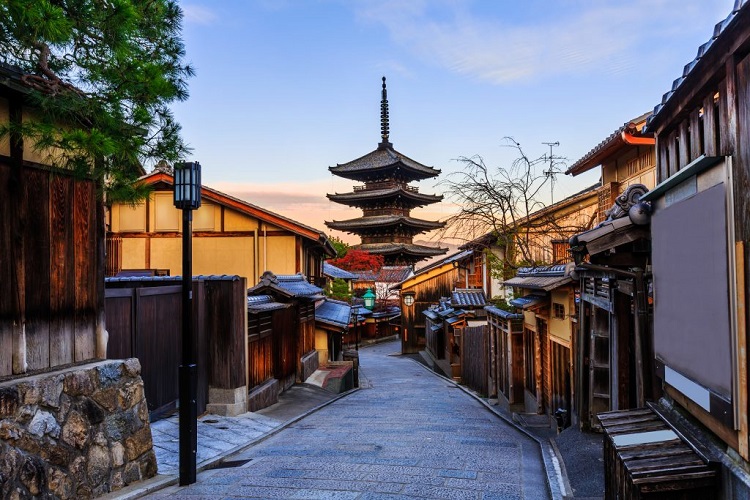
Kyoto is internationally appreciated for its rich culture and traditions that have seamlessly supported the old capital of Japan, while it is also highly recognized for its high academic standards and lead in industrial sectors. The city has an interesting balance of well-preserved historical landscapes and advance in business, and of tourism and local daily life. Surrounded by hilly areas, Kyoto also benefits from its distinct and beautiful seasonal changes, with snowy winters, blooming spring sakuras, the heat of the summer sun, and the crimson foliage colours of red and yellow trees in the mountains in autumn. As the former capital of Japan from 794 to 1868 AD, Kyoto is a significant hub of Japan’s traditional culture and contains many of Japan’s national treasures and properties. Important features of the city include Nijo Castle, two palaces, a number of temples & shrines including the iconic Kiyomizu Temple on a mountain overlooking the city below and Fushimi Inari Temple with the long row of red gates often captured in film and photography of Japan, the Arashiyama area rich with traditional shops and a famous bamboo forest, museums of history, art and technology, a famous fish market, modern and historic shopping and dining districts, an aquarium and the symbolic Kyoto Tower. Kyoto is also considered a centre for modern culture including Anime and Manga, and contains the Kyoto International Manga Museum which houses a massive library of manga which guests can peruse, hosts regular special events with international and Japanese artists, and conducts ongoing research and development of Manga as a significant form of art and story-tellling in the world. The residential streets of the city are still reminiscent of the old capital, which maintain the organised, grid-patterned imperial city plans, and are protected to preserve their historic beauty. With calm and peaceful suburbs as well as an urbanised and bustling city centre near Kyoto Station, the exciting thing about life in Kyoto is that, depending on the area you live or visit, you will get a completely different experience!
FUKUOKA: Home to Ramen, Street Vendors, and the Port to Asia
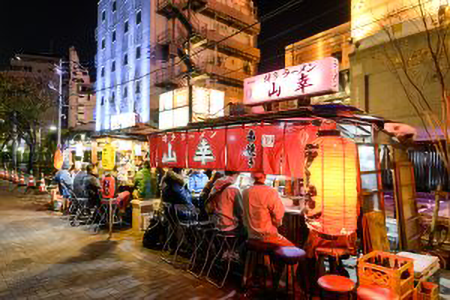
Fukuoka is the main prefecture and largest city on the island of Kyushu, and is well-known for its variety of foods and local gourmet from ramen to fresh seafood. Because of its proximity to the Korean peninsula and the Chinese dynasties, historically it functioned as an important site for national border security and was the chosen target of the Mongol invasions in the 13th century. In the late 9th century, the famous aristocrat and academic Sugawara-no-Michizane was sent to the region that is Fukuoka today, and he was enshrined in Dazaifu-Tenmangu where he is worshipped as a god of education and study. At the time, Fukuoka and Kyushu island was seen as a faraway place from Kyoto where ‘traitors’ against the imperial family would be sent. Beginning in the 19th century, Fukuoka became a site of industrial development. Its rich source of coal supported ironworks and ship-making in the region, gathering workers from other prefectures and abroad, which contributed greatly to the rapid modernization of Japan. The important factories and historical sites were registered as a UNESCO world heritage site in 2015. Because of the region’s proximity to the Eurasian continent and because of this industrial history, today it is home to the biggest number of foreign residents on the Kyushu island. In the modern day, Fukuoka is considered a foodie hub and is a chosen destination by many Japanese people for the enjoyment of famously delicious, unique and inexpensive food. In particular, Fukuoka is famous for tonkotsu ramen (porkbone base broth) and is the birthplace of the now internationally famous brand Ippudo, mizutaki nabe (chicken broth hot pot), shiomotsu nabe (salt & pork tripe/offal hot pot) , and seafood including mentaiko (slightly spicy salted cod row), gyoza and street stalls called yatai that serve various delicious food curbside until late. In recent years, Fukuoka has also gained the reputation for its delicious coffee and cafes. In the city center there is much to explore, with endless restaurants and cafes in the Daimyou District, shopping malls, departments stores and shoutengai in the Tenjin District around Tenjin Station, nightlife with karaoke, bars and clubs in the Nakasu District, and upscale shopping and dining in the area around Hakata station, where many universities are located amongst office buildings. Notably, there is also a mall near Nakasu and Hakata areas called Canal City that is famous for shopping and pop-up events and performances. Because Fukuoka is actually closer to Seoul than Tokyo, there is easy access to rest of Asia and specifically to Busan in Korea, where you can go by high-speed ferry in just over 3 hours from the International Ferry Terminal a little bus ride from Hakata Station. The traditional term ‘Kyushu danji’ (九州男児) is sometimes used to describe the courageous, earnest and strong nature of men in Kyushu. You may find hints of this nature as you interact with the people in the region here, but in general, the people in Fukuoka are understanding and warm. People enjoy familial and friend gatherings, so perhaps you will be invited to one when you visit there!
SAPPORO: The Capital of the North surrounded by mountains
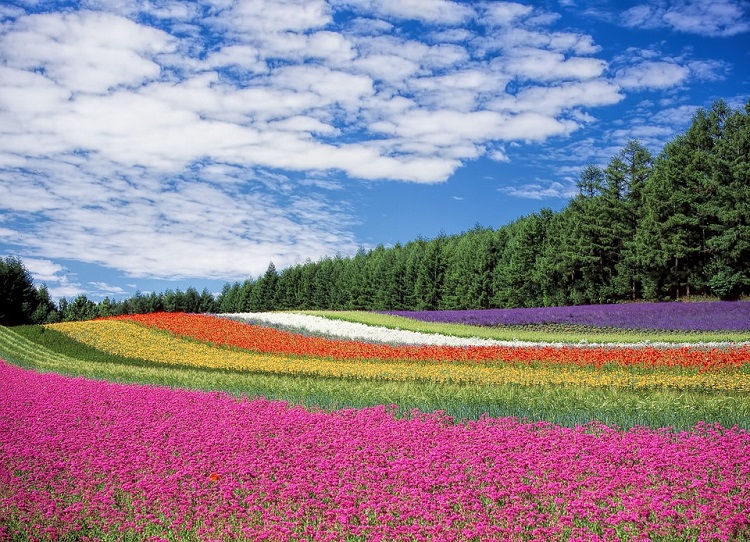
Sapporo is the capital city of Hokkaido, Japan’s most northern island located just north of the main island of Honshu. Sapporo is one of Japan’s youngest major cities, and underwent major growth through planning and development in the mid 19th century Meiji period where it was built up from a population of 7 people to being the 5th largest city in Japan. Due to its late development, it was designed with a western-style street grid system and as such, as you walk along the streets of Sapporo, you will notice that the roads are remarkably straight, unlike the intricate, winding streets and sprawling residences of other cities like Tokyo. Although Sapporo is an important city for business and financial sectors, Sapporo and other cities in Hokkaido also benefit from its beautiful natural landscapes, cool climate, and popular tourist sites. The food industry including agriculture, fishery, and beer also play an important part in supporting the Japanese economy. Sapporo is perhaps best known for its beer, ramen, and the annual Snow Festival (or Yuki Matsuri), and due to its mountainous landscape, is an international destination for all snowboarders and skiers, who have no doubt caught wind of Sapporo and Hokkaido’s famously powdery snow, which is most ideal for winter sports. In addition, although Sapporo and Hokkaido have been important for producing dairy products for Japan and has been known for its high quality dairy, the fame of Hokkaido milk and milk products (like cheese tarts and milk soft serve ice cream) have recently started to spread across the globe and have become a much sought-after experience among those travelling to Japan and specifically to Sapporo. Sapporo provides a wonderful place to live, with access to everything a city can offer as well as day trips out to the mountains for hiking, skiing or snowboarding, including Niseko, Japan’s most famous ski resort, as well as famous onsen resorts, including Noboribetsu, Japan’s most famous hot spring resort. As for the city proper, Sapporo offers a foodie culture rich with delicious sushi & seafood, distinct Sapporo ramen & soup curry, desserts & pastries (many of which are made from the famous local dairy), and local produce including fresh fruits & vegetables, in addition to a well-established nightlife hub in Susukino, parks & botanical gardens, indoor and open-air museums including that of the indigenous people of Japan known as Ainu, and plenty of shopping and famous food markets. In this way, Sapporo is ideal for someone who enjoys the outdoors and appreciates the beauty of Japan’s pinnacle snow country.
NAGOYA: The City of Industry, Design and History.
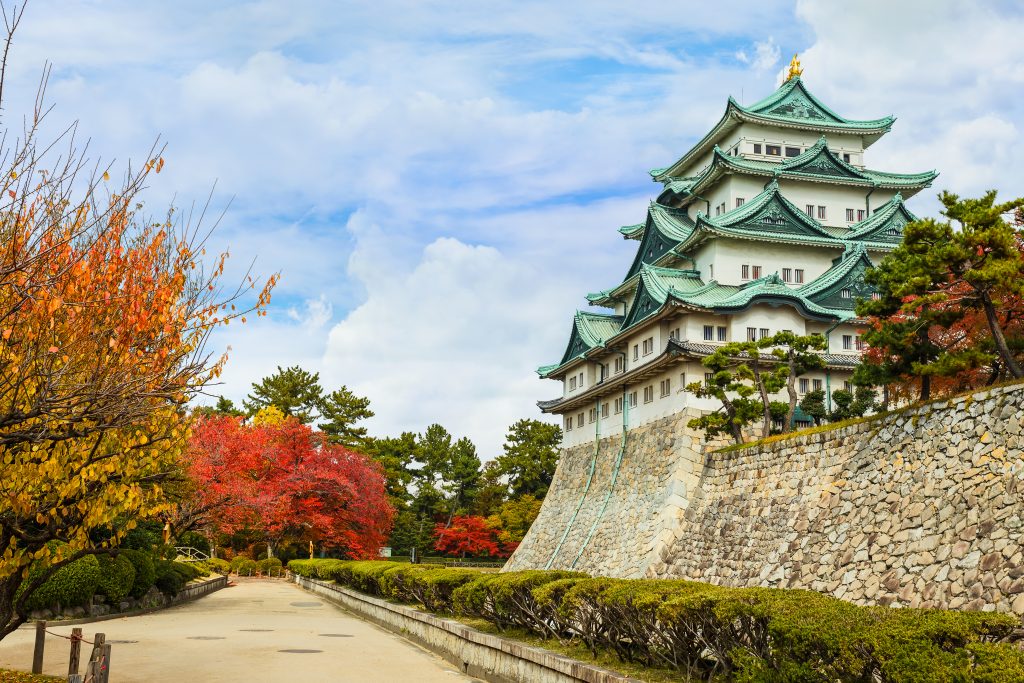
Nagoya is located in the centre of Honshu, the main island of Japan, between Osaka and Tokyo. It is the 4th largest incorporated city in Japan and plays an important role in Japan’s industrial society as home to the production of automobiles, aviation and machinery, as well as the traditional industries of ceramics and textiles. As the birthplace of three notable feudal lords, Oda Nobunaga, Toyotomi Hideyoshi and Tokugawa Ieyasu, with a long & rich history, this city pursues preservation of its historical townscapes with a modern infrastructure, aesthetic design, and innovation. As the capital city of Aichi Prefecture with its history starting out as a castle town of the Tokugawa Period, as well as being located at the very heart of Japan’s mainland, Nagoya offers everything you might imagine a city would with all of its conveniences and modern attractions laden with pockets of historical & cultural significance, as well as easy access to other cities and more rural cultural excursions. Aside from endless shopping and restaurant & café dining options of its downtown core such as in the Sakae area, some of the city’s main attractions include industrial museums such as the Railway and Toyota Museums, Tokugawa Art Museum, Science Museum, Nagoya Port area with leisure activities, the Osu Kannon Temple, Atsuta Shrine, Nagoya Castle, the Nagashima amusement park, and the Korankei valley consisting of Mount Iimori surrounded by a beautiful forest of maple trees, a river, and bridges to connect it all together. If you venture out further, Nagoya provides convenient access to such must-see destinations as the UNESCO World Heritage Site of Shirakawago featuring traditional villages nestled in the valleys between mountains, the historically preserved villages in the Kiso Valley , the beautiful and popular historic town of Hida-Takayama, Ise Shima near the ocean with hills, islands and sacred shrines, and the small historic castle towns of Gujo-Hachiman and Inuyama, and the famous onsen destination of Gero Onsen.
SENDAI: The city of nature
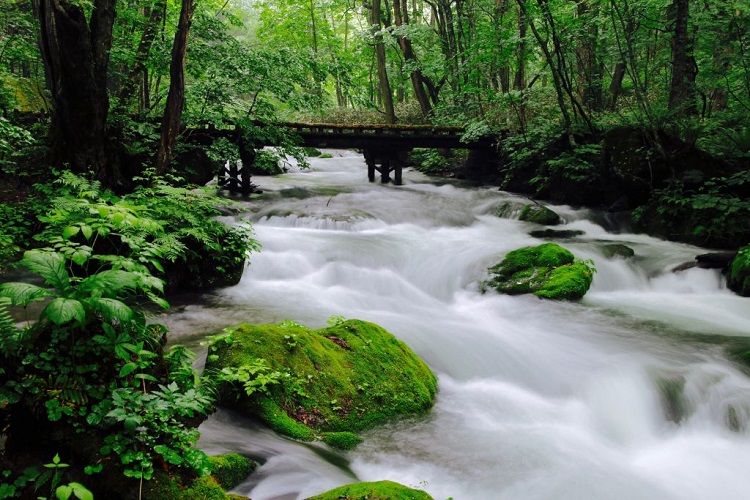
Sendai is the biggest city in Miyagi Prefecture and the Tohoku region by a large degree and ranks among Japan’s most 15 populous cities. Its history as a city is relatively recent, as it was built and organized by the great regional leader Date Masamune in the 17th century when Japan was split into many territories under the feudal system. Date Masamune has a large presence in the history and culture of Sendai, with many statues and monuments connected with him and his contributions not to mention the Osaki Hachimangu Shrine, Rinnoji Temple, and Aoba Castle aka Sendai-jo, which are all tied to him and his family. The Tohoku region is known for its heavy snowfalls in the winter, but Sendai profits from its geographical location near the Pacific Ocean. In general, snowfall tends to be more severe in the west coast of Japan than the east, because the cool air mass from the Eurasian continent absorbs water from the Sea of Japan on its way to the Japanese islands, but the high mountains that run through Honshu island blocks the clouds from reaching the east coasts. Winter in Sendai is very chilly, but relatively mild compared to other cities in Tohoku. The Tohoku region experienced a large-scale earthquake on March 11, 2011. The earthquake and tsunami, which are called 東日本大震災 (ひがしにほんだいしんさい) in Japanese, caused a lot of damage to the region, especially prefectures facing the Pacific Ocean. The damage caused mostly affected Sendai’s coastal areas but for the most part did not affect Sendai’s city centre. Most of the other main cities have recovered to a large extent, but some areas still suffer from the aftermaths. The Tohoku region, as well as Japan as a whole, shares the anxieties and hope for a brighter future. Among all of the cities that we have mentioned, Sendai is among the lesser populated, however Sendai still has all of the benefits of a city with a relatively compact yet plentiful central city core that includes the largest shopping arcade in the Tohoku region known as the Ichibancho Arcade, the 100-meter “morning market” Asaichi, and the AER Building, which is the former tallest building in Sendai featuring a multi-level mall on the first 4 floors as well as restaurants and a free observation deck with a panoramic view of the city on the uppermost 31st floor. A unique feature of the City of Sendai is that despite it being urban, it features wide streets that are lined with plenty of greenery, a characteristic that has resulted in Sendai being nicknamed “The City of Trees”. Indeed, the people of this city are fond of nature. In this way, Sendai is a great place for anyone who shares this aesthetic and wishes to incorporate it into their life both within the city as well as through accessible trips in the areas surrounding the city which include the natural beauty site of the Akiu area with hot spring resorts, the Sakunami area with a river and waterfall running through a forest, and the Tatsunokuchi Gorge with a famous Otamaya-bashi bridge, parks and diverse wildlife. Also, the nearby Matsushima area, a group of islands just outside of Sendai that is one of the Three Views of Japan, an official designation by Japanese people of the most beautiful scenic spots of the country.
SAITAMA: The peaceful neighbourhoods north of Tokyo
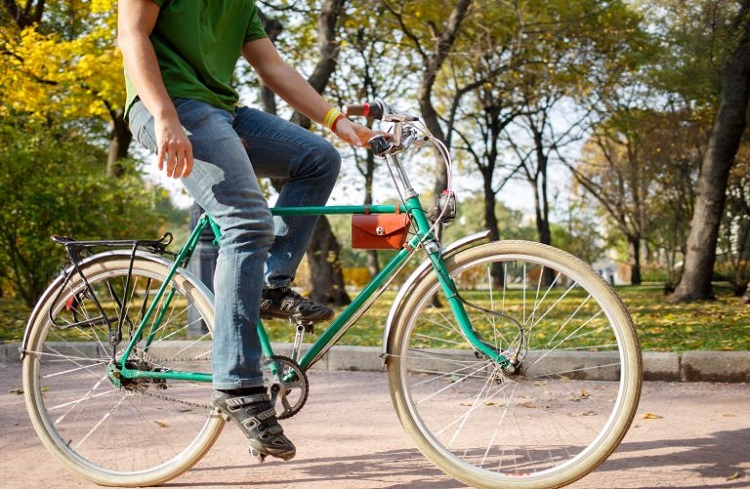
Saitama prefecture is located about 30 minutes just to the north of Tokyo, and consists mostly of peaceful suburban neighbourhoods as most of its population commutes to Tokyo for work every day. As a result, some pockets of more populated hubs form around Omiya and Urawa stations, which serve as the main connecting stations to two popular train lines that run directly to central Tokyo. There is a joke about the constant battle of pride between the residents of the two districts that were formerly separate cities but were merged into Saitama city in 2001. The areas around these two stations are therefore great places to visit or to live as it is great for shopping, dining, and nightlife activities, with everything from department stores and shopping centers, popular restaurants, karaoke bars, izakaya and cafes to be found in their vicinities. Other popular places to visit in Saitama city include a renowned railway museum, the Omiya Bonsai Village featuring rare bonsai trees, the Hikawa Shrine, and The Saitama Prefectural Museum, in addition to a great number of beautiful parks, the Saitama New urban Center consisting of the Saitama Super Arena (3rd largest indoor arena in the world), the Saitama Stadium, and the scenic views of the Minuma Rice Paddies consisting of paddy fields, farmlands, forests and rivers. Around Saitama City, the business and administrative core of Saitama prefecture, there is also to be found the well-preserved and historical city of Kawagoe aka “Little Edo”, and as a the popular area of Chichibu, a city in the west famous for its shrines and beautiful nature including forested mountains ideal for hiking. Also within reach of Saitama city but just outside of Saitama Prefecture over its border are the three ‘Kita-Kanto’ prefectures, including Gunma, Tochigi and Ibaraki to the north, as well as Nagano prefecture in the Chubu region to the west. Saitama is a popular and charming place to live for everyone, including international students and professionals, and for anyone who might like to be close to Tokyo but in a significantly quieter and affordable area. As we can see, Saitama also has plenty of things to do both within its urban pockets, as well as surrounding beautiful nature.
CHIBA: The City of Hidden Gems
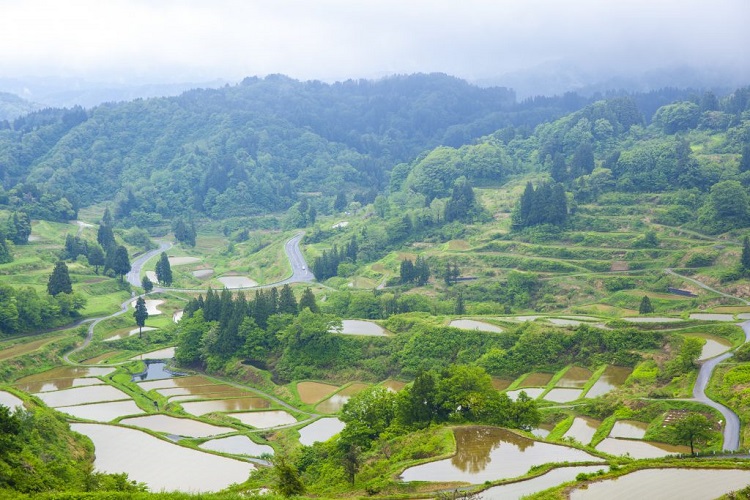
Believe it or not, Tokyo Disneyland is not in Tokyo but actually in Chiba! Chiba is located right to the east of Tokyo, so you can come and go to central Tokyo with ease and benefit from significantly cheaper living costs. Note how the prefecture is shaped like a dog. The official prefecture mascot, “Chiiba-kun” takes the motif of the dog, and people living or working in Chiba prefecture may refer to the body parts of the dog to describe an area or city. The north part of Chiba (Chiiba-kun’s head) has bigger, industrial districts whereas the south part of the Boso peninsula (Chiiba-kun’s body) is a more rural area where agricultural products such as rice and a variety of vegetables including spring onions and Japanese pear, livestock and peanuts are made. The region facing the Pacific Ocean (Chiiba-kun’s back) has a beautiful sandy coastline, in contrast to the typical rocky coastlines or busy ports in other regions of Japan. Many JR railway networks connect Tokyo to Chiba, so whether you study in Chiba or Tokyo, living in Chiba could be an option for you to consider to cut down on your staying costs. However, because the railway system connects to the busiest areas of Tokyo, you might wish to give yourself extra time as there are sometimes experiences of train delays. In addition, if you are coming from the outskirts of Chiba, you may only have two or three trains per hour, depending on the area. That being said, there is a reason why Chiba is such a popular city to live in and the announced favourite of the CEO billionaire of ZOZO Town, as it is not just conveniently located, but has a charm of its own with some unique features that don’t exist in Tokyo. In addition to Narita International Airport, Japan’s busiest airport which can be visited for shopping alone, Chiba also has the downtown area of Funabashi with shopping, dining and an observation deck, in addition to famous sightseeing experiences like the Boso Peninsula. Moreover, lesser known spectacles of Chiba include farm experiences where you can eat the organic food directly grown there or pick locally produced pears straight from the tree, visit arguably the world’s best museum of Modern Art known as Hoki Museum, catch a baseball game by the famous Chiba Lotte Marines at the ZOZO Marine Stadium, visit the beautiful nature of rice paddies on the hillside of Kamogawa, visit Sawtooth Mountain by cable car, explore Honjoji Temple surrounded by a forest of deciduous trees in Matsudo, and go surfing on Onjuku beach.
YOKOHAMA: The Port City of Japan and Tokyo.
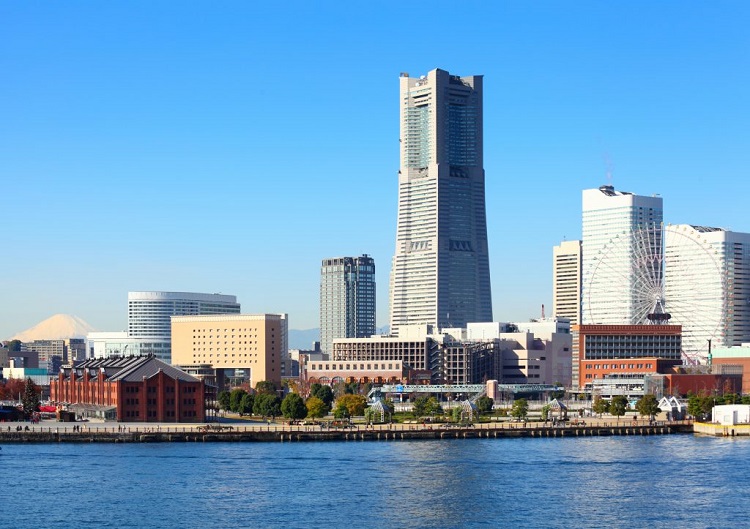
Yokohama is a city large in its geographical size and in its population, and is the 2nd largest city in Japan, though it’s interesting that even Japanese people overlook Yokohama and would tell you that Osaka is the “second city” of Japan. Yokohama is a residential, industrial, and tourist city, and has developed radically and undergone re-gentrification in recent years. The city offers convenient lifestyles, as a quiet bed town away from its business districts and from the bustle of Tokyo, and at the same time, contrarily has a downtown core with high-density living alongside offices and commercial areas. Yokohama has been and still continues to be a center for international cultural exchange. With its proximity to the sea, the Chinese diaspora landed on Yokohama and created Japan’s largest Chinatown, which still exists today. Yokohama port was also where the Commodore Matthew Perry from the United States landed, and from this, Yokohama is considered as the place where the Meiji Restoration started. To this day, Yokohama is a highly popular place to live among Expats, or international people. It is also a locus of new trends and chic fashion. Kanagawa prefecture, where Yokohama is located, consists of other major cities such as Kawasaki, known for its heavy industries, Kamakura, where the shogunate in the 13th century built his fort, and Hakone, a volcanic area with hot springs. The residential areas in Yokohama are calm, whereas the business districts and popular tourist sites are busy on both weekdays and weekends. It is a popular weekend trip destination for Japanese people who live in other parts of Kanagawa and Tokyo as well, so people are often coming and going on a regular basis. Because Yokohama is directly connected with the many main areas of Tokyo, the trains and subways can get fairly crowded during rush hour peak times. If you are planning to live or study in Yokohama, it’s good to keep in mind that you may have to arrive at the station early so that you won’t be late, as you may have to miss a couple of trains before finally boarding! That being said, Yokohama is a great place to live for international people as there are plenty of activities to do outside of your study or work life, including walking along Yokohama’s 750-meter waterfront which is lined with Yamashita Park, exploring Yokohama’s new city center and “harbour of the future” known as Minato Mirai 21 with its museums, unique shopping and dining experiences, for example at the old Red Brick Warehouses, and entertainment attractions including an amusement park with a large Ferris wheel, upscale shopping at the department stores around Yokohama station, and exploring the endless food scene of Japan’s largest Chinatown. Although people of Tokyo would consider a day-trip to Yokohama for an escape and an accessible adventure, if you are living in Yokohama you could conversely take weekend trips to Tokyo to explore its vastness with friends with a train ride that takes less than 30 minutes.
